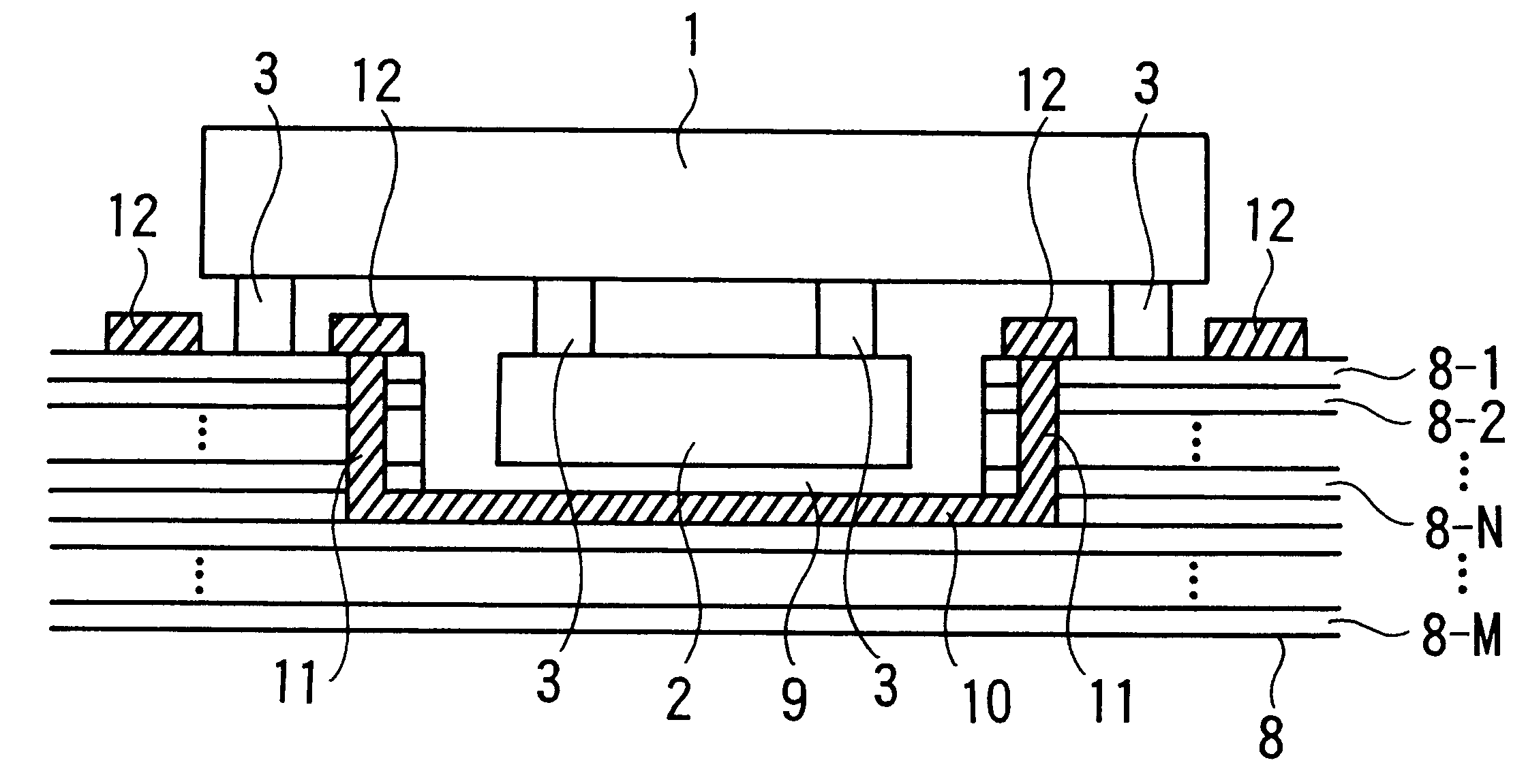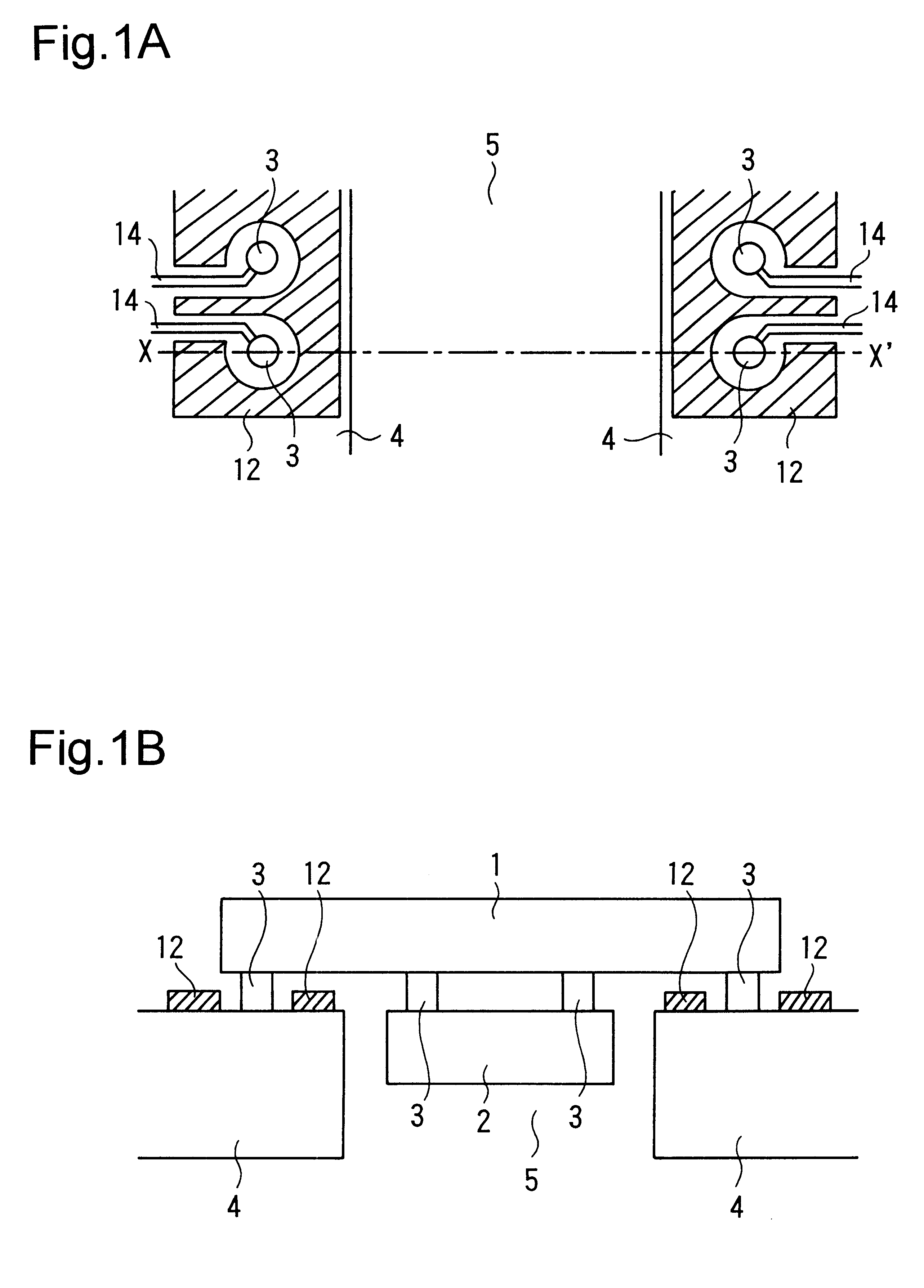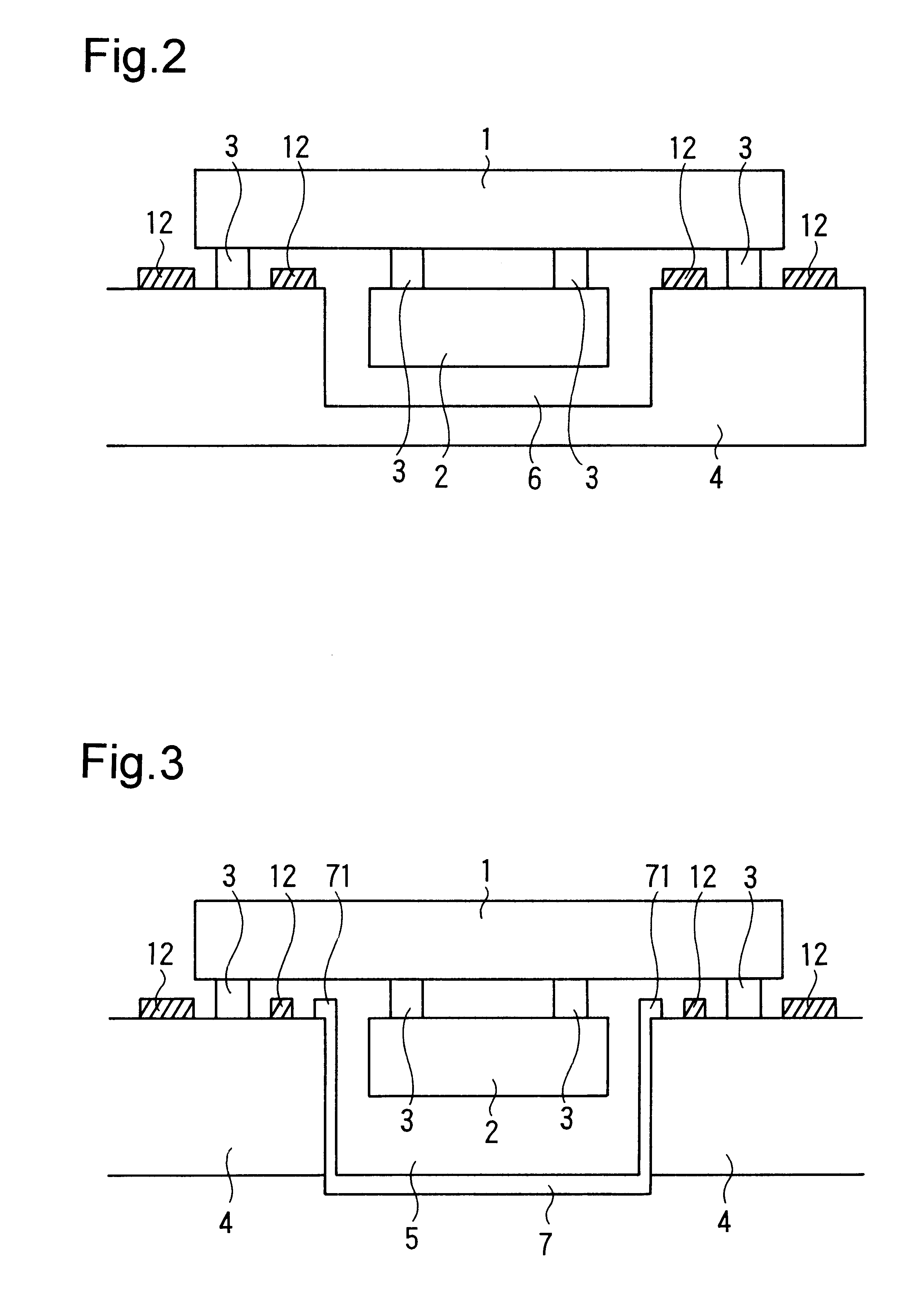Integrated circuit device
a circuit device and integrated circuit technology, applied in the direction of basic electric elements, electrical apparatus construction details, support structure mounting, etc., can solve the problems of poor or uneven sensitivity, further increase the overall thickness, hamper the reduction of cost and weight,
- Summary
- Abstract
- Description
- Claims
- Application Information
AI Technical Summary
Benefits of technology
Problems solved by technology
Method used
Image
Examples
first embodiment
Hereinafter, embodiments of the present invention will be described with reference to the drawings. FIG. 1A is a top view of the circuit board (in its state before IC chips are mounted thereon) of the integrated circuit device of the invention. FIG. 1B is a sectional view taken along line X-X' shown in FIG. 1A.
In the first embodiment, a chip-on-chip structure is formed by electrically connecting together a first IC chip 1 and second IC chip 2 through bumps 3 such as gold bumps. Wiring patterns 14 are aid so as to originate respectively from bumps 3 formed on a circuit board 4. The circuit board 4 is made of resin, ceramics, or the like, and has a through hole formed therein so as to be large enough to accommodate the second IC chip 2, i.e. the smaller of the two IC chips, therein.
The first IC chip 1 is so positioned that the second IC chip 2 is accommodated in the through hole 5 formed in the circuit board 4, and is electrically connected to the wiring pattern 14 formed on the circu...
second embodiment
In this second embodiment, the portion of the circuit board on which the first and second IC chips 1 and 2 are mounted is surrounded by the shielding material 7 connected to the fixed potential point and by the reverse surface of the first IC chip 1 (the surface of the first IC chip 1 opposite to the surface thereof to which the second IC chip 2 is bonded), which also offers a shielding effect. Thus, it is possible to obtain a sufficient shielding effect.
Moreover, the shielding material 7 has only to be at least somewhat larger than the second IC chip 2, i.e. the smaller of the two IC chips, up to about the size of the first IC chip 1. This helps reduce the amount of shielding material required and thereby achieve cost reduction and weight reduction. By making the shielding material 7 somewhat larger than the first IC chip 1 as shown in FIG. 5, it is possible to expect a higher shielding effect.
FIG. 6 is a sectional view of the integrated circuit device of a third embodiment of the ...
third embodiment
In this third embodiment, the portion of the circuit board on which the first and second IC chips 1 and 2 are mounted is surrounded by the wiring pattern 10 and the via conductors 11 connected to the fixed potential point and by the reverse surface of the first IC chip 1 the surface of the first IC chip 1 opposite to the surface thereof to which the second IC chip 2 is bonded), which also offers a shielding effect. Thus, it is possible to obtain a sufficient shielding effect. Moreover, a wiring pattern formed in the multilayer circuit board 8 is used as shielding material, and therefore there is no need to provide shielding material separately. This makes it possible to achieve further cost reduction and weight reduction.
PUM
 Login to View More
Login to View More Abstract
Description
Claims
Application Information
 Login to View More
Login to View More - R&D
- Intellectual Property
- Life Sciences
- Materials
- Tech Scout
- Unparalleled Data Quality
- Higher Quality Content
- 60% Fewer Hallucinations
Browse by: Latest US Patents, China's latest patents, Technical Efficacy Thesaurus, Application Domain, Technology Topic, Popular Technical Reports.
© 2025 PatSnap. All rights reserved.Legal|Privacy policy|Modern Slavery Act Transparency Statement|Sitemap|About US| Contact US: help@patsnap.com



